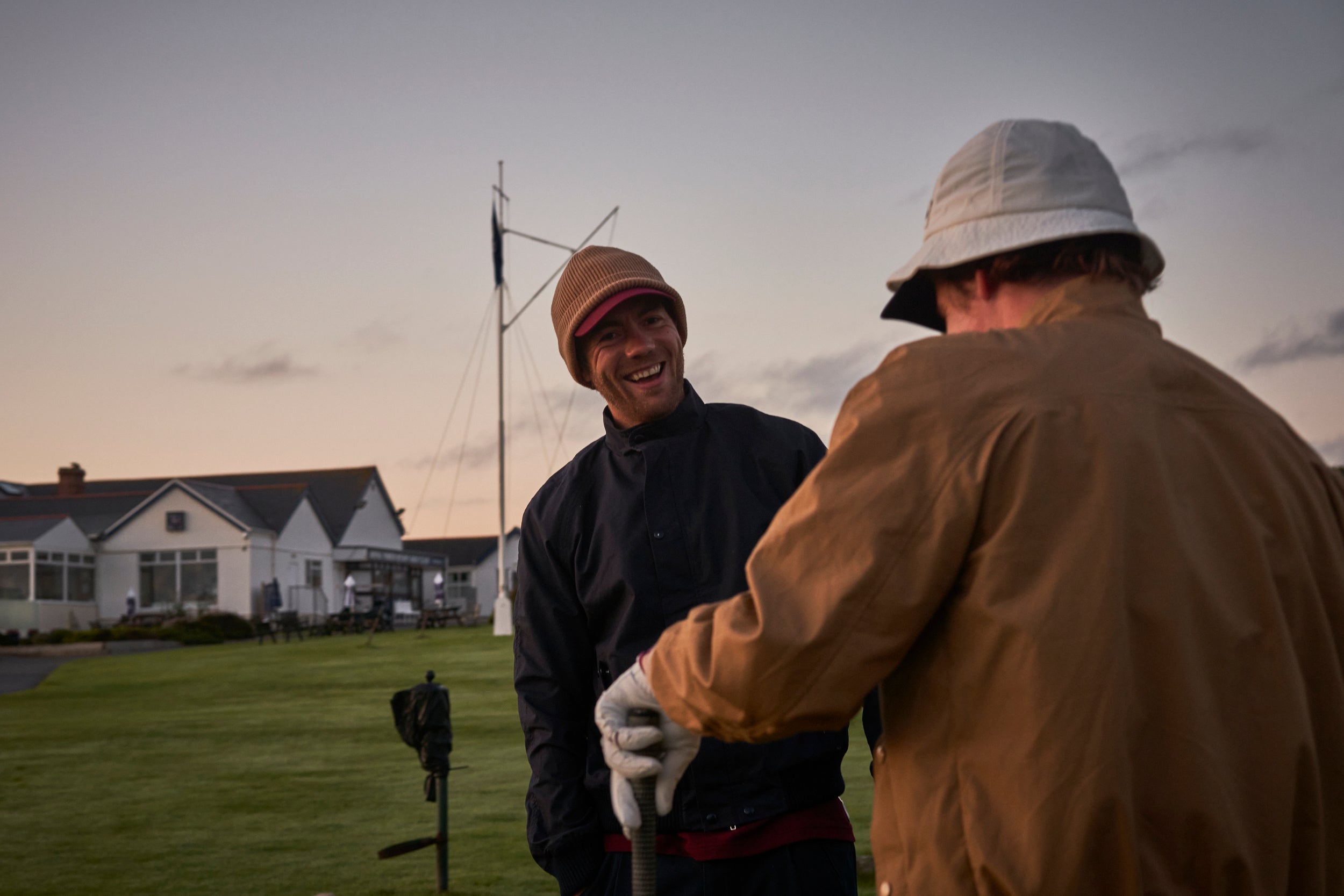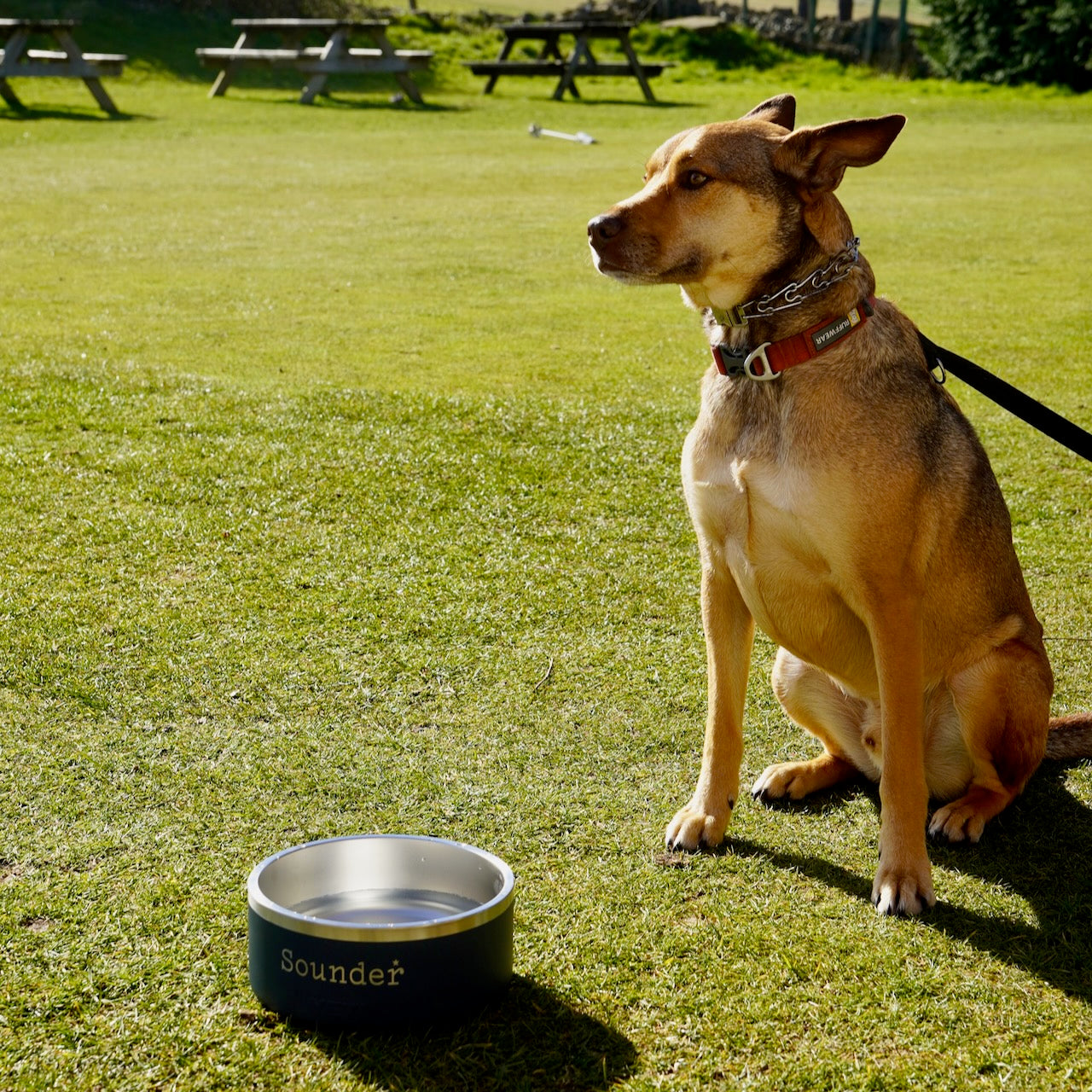My wife knew exactly what she was doing by holding back her trump card. She had been carefully monitoring the furrow in my brow as the letting agent showed us around the rather dilapidated Devon farmhouse that she had set her heart on. She had smiled when, behind the agent’s back, I had silently mouthed my doubts over the tired decor, lack of central heating and evidently dodgy wiring. She knew me well enough to realise that everything would change once we ventured outside.
Like countless others, we had talked about turning lockdown life into a new reality for our young family. Spending the first four months of the pandemic living with my parents beside the sea in Cornwall had given me a delicious first taste of non-city life (and a long spell to work on my errant chipping in their garden), but I was still unsure about being ready to uproot from our nice terraced house in London, where we were surrounded by friends, amenities and a fantastic local primary school that our kids were settled at. The woman from the agency wasted no time in telling us that we were one couple among a great many that had expressed an interest in this particular property.
My wife nodded keenly. She had clearly fallen in love with the place, evidenced by the fact she had already been to see it twice. Having grown up in a small village in north-east Scotland, country living held no terrors for her. The idea of a rural existence with no neighbours, no noise and numerous beaches within a short drive was certainly appealing, especially after the experience of the second lockdown, which had been spent contemplating my own increasingly frazzled appearance on endless Zoom calls in a room so small I could touch all four walls from my chair. I felt like I should have been wearing an orange jumpsuit and manacles, delivered to my desk each morning on a handcart.
I wasn’t sold on the farmhouse, even as we headed out to look at the garden, which was huge compared to our postage stamp in London. Swallows dived and soared like airborne fish above the outbuildings at the back of the house. As my body language betrayed my misgivings, my wife made her move. She led me to a four-bar metal gate guarding the entrance to an overgrown wilderness awash in waist-high grass and punctuated by a few gnarled apple trees. “And this,” she said, throwing an arm out towards the acre of undulating land, “is your golf course.”
She’d won. I was in. Two hundred per cent, no further questions, in.

Dan Davies - greenkeeper, architect and proprietor
Like most golfers, I am incapable of looking at any expanse of land without imagining how it could be turned into a golf hole, or better still, a golf course. From public parks to the gardens of stately homes, arable fields to unloved parcels of waste ground next to motorways and railway lines, my mind instinctively finds contours and shapes that lend themselves to potential tee boxes, fairways and green sites. When I was a kid, we were once lucky enough to live in a house with an L-shaped garden big enough for me to create a 9-hole course, on which I amassed dozens of major titles in one-man tournaments played with my dad’s 9-iron and an air-flow golf ball. Ever since then, a piece of land is all I’ve ever wanted.
And here it was. A small corner of pasture, approximately 100 yards from corner to corner, but one that, to my untrained eyes at least, oozed potential. There were slopes and changes in elevation, and I could see green sites everywhere. There were banks of rushes and closer inspection confirmed that the dark line of brambles that snaked down one side was indeed a stream, albeit choked with weeds, stinging nettles and what looked like wild watercress. The apple trees were bent over and strangled by tangled, thorny thickets. Getting to the top, where a wooded glade revealed a spring feeding a small pond, entailed losing all sight of my feet. USGA-style rough was not going to be a problem here.

The course starts to take shape in the orchard behind the farmhouse
Enthusiasm for the house suddenly surging, I managed to ace the interview with the wealthy landowner whose estate the farmhouse belonged to. We were offered the property, swallowed hard and looked at each other, wondering what the hell we were getting ourselves into. The next two months were spent on the herculean task of organising the move and then transporting a lifetime of possessions and three reluctant children 200 miles west.
Ahead of moving day, I spent a week at the house with my nephew. Our task was to try to make the place habitable. On arrival, this looked like a very unlikely prospect indeed. The grass had been allowed to grow so high that we struggled to open the gate to the front garden. Once we had fought our way through the vegetation to the orchard, the months of neglect were evident in grass, clumps of dock and beds of razor-sharp rushes that were now chest-high in places. My nephew knew what the plan was – I had shared a Google Earth image of the new course with a proposed nine-hole routing. We were armed only with a pair of strimmers and no shortage of excitement.
By the end of that first week, we had done some painting and, more importantly, established four green sites. Three were the product of our own sweat, cuts, stings and abrasions; one was thanks to a man named Gerry, the owner of the barns around the farmhouse, which, he explained, he’d been long planning to develop into houses.
In one of those barns, Gerry kept a fleet of machines — tractors, diggers, mini dumpers and sit-on mowers of various shapes and sizes. He’d spotted me and my nephew from his orchard, adjacent to my nascent golf course, and brought some of his firepower to the party. We had already christened the first three greens: ‘First’ (for obvious reasons), ‘Apples’ (because it sits on a prime central shelf next to the biggest apple tree) and ‘Kop’ (situated on a rise). Our new friend’s freshly shorn circle was duly named ‘Gerry’s’. Royal Norton Golf Club, or RNGC as it is now known, was underway. My brother and a friend, who both live nearby, came over to check on our progress. We sat outside on ‘First’ green, lit a small fire and toasted the new project as the stars blinked from a clear night sky.

A spot of maintenance on the greenkeeping equipment
Eight months on and the orchard is transformed. Or at least that’s what I tell myself as I look out of the upstairs back windows of the house each and every morning. There are 10 greens cut (one, in fairness, is about the size of a coffin). Paths (or 'unfairways', as I prefer to call them) have been established and Ray’s Creek (there is no Ray), is now gurgling freely, thanks to a two-day, Apocalypse Now-style mission to fight my way upstream to its source, packing only a pair of rusty garden shears and an unquenchable sense of destiny.
Now that the canvas has been primed, the detailed brush strokes are being applied. The hefty winter investment in a vast sack of superfine dwarf ryegrass was rooted in the desire to replace the pasture grass greens that I endlessly mowed and trained over the late summer, the small windows of rainless winter and now, almost daily, as we move into spring. The dream is to create surfaces that are properly puttable, rather than bumpy terrain pocked with bare patches and weeds, which result in a putt spending as much time in the air as it does on the ground.
Tees have been strimmed from the wilds. The smallest, most unforgiving bail-out areas are currently being tamed. There have been design innovations, too (if indeed you can call them that). The first is creating a sense of lottery amid the expanses of shin-high clag. By strimming around the thickest clumps, I have opened up narrow channels of good fortune, meaning even a dire shot can sometimes get lucky. And given digging bunkers is beyond my bad back, I have come up with a new form of hazard: mobile stick mounds. These parcels of dried bramble fronds, sticks and cuttings from the apple trees are tied together with string and resemble Aintree jumps, albeit in miniature. They can be moved around the course to satisfy whatever sadistic whim takes my fancy.
Why am I doing this? Well, it’s certainly not for profit. We don’t own the land. On his only visit since we took over the tenancy, the landlord’s agent seemed satisfied with my explanation that the greens were picnic areas for the kids (which, in fairness, they can be). Play at RNGC is strictly by invitation-only but no-one has played the course with me yet. And yet there has not been a day when I’ve walked around it (and those walks take place multiple times a day when I’m at home) and failed to slip into the same, familiar reverie. In it, I picture the course dotted with my friends, sun shining, music playing and laughter ringing off the trees and hedgerows.
RNGC, you see, is nothing if not a sincere and heartfelt homage to another great but little-known backyard golf course. For 10 years, a group of friends from Royal North Devon Golf Club, where I have long been a member, came together at the hilltop farmhouse owned by the parents of David Ford, one of the finest players in the club’s history. Fordy, as he is known by everyone, created a fiendishly difficult 9-hole course called Royale Cabbage Patch, which hosted an annual fancy dress knockout competition. The format was extreme short golf. ‘Good shot. Unlucky’ became the club motto; hilarity was its ethos. Before long, people were coming from far and wide to play in the Ford Classic, enticed by the stories of all-day golf parties featuring enormous quantities of booze and legendary finals contested between Gandalf and Teen Wolf or Colonel Gadaffi and Jesus.
The fun that we had at The Patch has sustained those of us lucky enough to play there. It also inspired our next venture. Fordy went to work at Urban Golf with James Day, one of Sounder’s co-founders, and the three of us joined forces on The Mini Masters, a madcap charity par-3 tournament, which saw us transform Duke’s Meadows, a small but brilliant 9-hole course in Chiswick, west London, into a golfing fun park for one Friday each summer. Celebrities played, there were bars on every hole, a commentary tower and a giant plasma screen that rose hydraulically from the back of an articulated truck to beam live pictures from the course. Short golf, music and fun were our articles of faith. The event got so big that one year we had a festival stage in the middle of the course, and in another we built a floating green in the pond. We raised hundreds of thousands of pounds for the leukaemia charity and nearly killed ourselves doing it. We were only half-joking when we called it ‘the fifth major’.
The Patch, as it is fondly known by all who had the privilege to play it, is no more. The trees have grown in, which means the playing area is a fraction of what it once was (and that was not very big at all). The ghosts of The Patch are still laughing on that hilltop in Bideford, while the pandemic put paid to The Mini Masters after 12 glorious years. So now, as those great times recede in the rear-view mirror, we go back to basics.

Work continues on the 'greens' at RNGC
RNGC is more than an idea. It is a golf club in the truest sense. It has a clubhouse (an open-sided animal shelter with a corrugated iron roof where I plan to have tables and serve homemade cider); a club crest featuring Phil the Pheasant, a constant presence in the orchard and feathered menace to my grass seed; and it has a course (there is no par – RNGC is a matchplay venue designed to be played in any desired combination of tee and green).
It even has a greenkeeper shed (it’s actually a stable), which is slowly filling up with second-hand machinery. The first purchase was an ancient Honda sit-on mower, acquired for £120 from the farmer who lived in the farmhouse and worked the surrounding land for almost half a century before we moved in. He has become my friend and mentor, and has been back on numerous occasions to fix the drive belt after I’ve tried and failed to drive it through the thickest rough on the course. Over time, the sit-on has been joined by a strimmer with a motor that kicks out more HP than most of the cars I’ve ever owned, and an Australian petrol mower that has a vendetta against starting and all plants over two inches in length.
As yet, though, it has no members. But that will soon change. The time and the effort, and the arsenal of cheap equipment that has been mobilised, have just one aim: the RNGC Invitational, which takes place on Saturday June 11th. All those who play will become honorary life members of the club.
There have been plenty of occasions when I have questioned the wisdom of ploughing all my energy and spare cash into this one day. But for me, and I hope for the friends who have played at The Patch, in the Mini Masters, and who will travel to south Devon to play in The Invitational, it is about something more. It’s about keeping a flame alive, bringing people together and making golf – however short and ridiculous — as much fun as it can possibly be. Soon enough, the small but perfectly formed slice of heaven that I gaze at every morning as the sun rises and every evening as the shadows lengthen, will be completed by the people it was created for. And that will be when the dream becomes reality.

Follow the progress at RNGC on Instagram: @rngc2021
We're delighted to support the official opening of RNGC, the UK's premier pasture pitch & putt club, with the RNGC x Sounder official t-shirt - just £25
Read more

Part 1 of Richard Pennell's guide to joining a golf club covered the membership interview. If you've made it this far, you're ready for Part 2 - the play-in round...

When the marketing might of Nike met the genius of Tiger Woods, the golf industry changed forever. But a chance encounter and a Nike film from the pre-Tiger era gave Jon Davie a glimpse into an alt...




